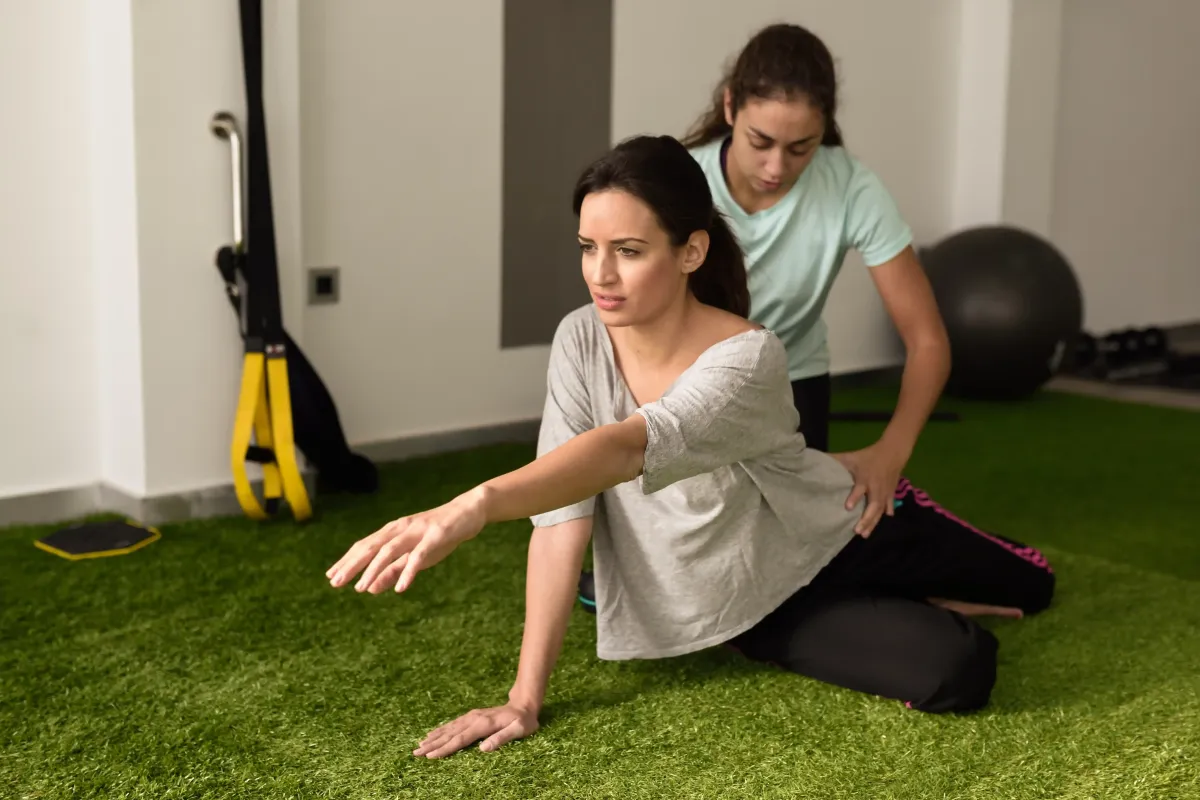
Top 6 Physical Therapy Exercises at Home to Manage Sciatica
Introduction
Living with sciatica can make simple daily activities, such as sitting, walking, or even sleeping, uncomfortable. While medical guidance is crucial, gentle, targeted exercises at home can help relieve nerve tension, strengthen supportive muscles, and reduce the risk of flare-ups. Here, we share six effective physical therapy exercises you can safely do at home, along with tips on how to modify them for your comfort level.
1. Bird-Dog Exercise
The bird-dog targets the core and lower back, which are essential for stabilizing your spine and reducing pressure on the sciatic nerve. Strengthening these muscles helps support your posture and prevents further irritation.
How to do it:
Start on your hands and knees, keeping your wrists under shoulders and knees under hips.
Slowly extend your right arm forward while extending your left leg backward. Hold for 5–10 seconds.
Return to the starting position and switch sides.
Repeat 8–10 times per side, once or twice daily.
Tips:
Move slowly and keep your back flat. Avoid overarching or letting your stomach sag.
Focus on keeping your core engaged; imagine gently pulling your belly button toward your spine.
2. Seated Piriformis Stretch
A tight piriformis muscle can irritate the sciatic nerve, causing pain or tingling down the leg. Stretching this muscle can relieve tension and reduce discomfort.
How to do it:
Sit on a chair with feet flat on the floor.
Cross your right ankle over your left knee, forming a figure-4 shape.
Gently lean forward, keeping your back straight, until you feel a stretch in your buttock.
Hold for 20–30 seconds, then switch sides. Repeat 2–3 times per side.
Tips:
Avoid bouncing or forcing the stretch.
If seated stretches are uncomfortable, try lying on your back with the same figure-4 leg position.
3. Glute Bridge
Strengthening the glutes supports the hips and lower back, reducing stress on the sciatic nerve. Many people with sciatica have underactive glutes, so this exercise helps restore balance.
How to do it:
Lie on your back with knees bent and feet hip-width apart, arms at your sides.
Push through your heels to lift your hips toward the ceiling, forming a straight line from shoulders to knees.
Hold for 5–10 seconds, then slowly lower down.
Repeat 10–12 times, 1–2 sets daily.
Tips:
Squeeze your glutes at the top for maximum activation.
Avoid arching your lower back; keep the movement controlled and smooth.
4. Knee-to-Opposite-Shoulder Stretch
This stretch gently lengthens the piriformis and glute muscles, which can relieve nerve pressure and reduce leg pain. It is particularly helpful during flare-ups.
How to do it:
Lie on your back with knees bent and feet flat.
Bring your right knee up toward your chest.
Guide it gently across your body toward your left shoulder.
Hold for 20–30 seconds, then return to center. Repeat on the other side, 2–3 times each.
Tips:
Avoid forcing your knee beyond your comfortable range of motion.
Move slowly and breathe deeply to release tension.
5. Cat-Cow Stretch
This gentle yoga-based movement improves flexibility in the spine and helps release tightness in the lower back. For many people with sciatica, stiffness in this area can worsen nerve compression. The cat-cow stretch promotes spinal mobility and relaxation without straining the lower back.
How to do it:
Start on your hands and knees with your wrists under your shoulders and knees under your hips.
Inhale and arch your back, letting your belly drop toward the floor while lifting your head and tailbone — this is the “cow” position.
Exhale and round your spine upward, tucking your chin toward your chest — this is the “cat” position.
Continue alternating slowly between these two positions for 30–60 seconds.
Tips:
Move with your breath, not speed.
If your wrists feel strained, rest your hands on fists or lower to your forearms.
Focus on smooth motion rather than how deep you can go.
6. Standing Hamstring Stretch
Tight hamstrings can pull on the pelvis and lower spine, increasing tension along the sciatic pathway. Gently lengthening these muscles can relieve pressure and restore better posture and movement patterns.
How to do it:
Stand facing a low surface like a step or sturdy chair.
Place one heel on the surface, keeping your leg straight and toes pointing up.
Lean forward from your hips (not your back) until you feel a stretch along the back of your thigh.
Hold for 20–30 seconds, then switch legs. Repeat 2–3 times per side.
Tips:
Keep your spine straight — avoid rounding forward.
Stop immediately if you feel pain radiating below your knee.
Consistency matters more than intensity; stretching daily works best.
Source: Healthline
When to See a Doctor for Sciatica
If you’re experiencing symptoms that mimic sciatica, it’s important to know when you should seek medical attention. Dr. Zarcone points out that certain warning signs require urgent evaluation. These include fevers, chills or night sweats—which may signal an infection—and especially severe pain, numbness or weakness in the leg, or changes in bladder or bowel function. “These may be signs of a rare condition known as cauda equina syndrome, which can lead to permanent damage if not treated immediately,” she explains.
On the other hand, milder sciatica episodes often improve on their own—with rest, cold or heat packs and anti-inflammatory medications. But Dr. Zarcone emphasises, “Even mild symptoms merit a check-in. Early intervention gives you the best chance for full recovery and helps prevent the problem from becoming chronic.”
She adds: “Starting with a physical therapy assessment allows us to identify the underlying cause—whether it’s a disc issue, muscular imbalance or postural pattern—and build a tailored exercise plan before things escalate.” If treatment through physical therapy alone doesn’t resolve the problem, “we coordinate with specialists to ensure the right next step,” Dr. Zarcone says.